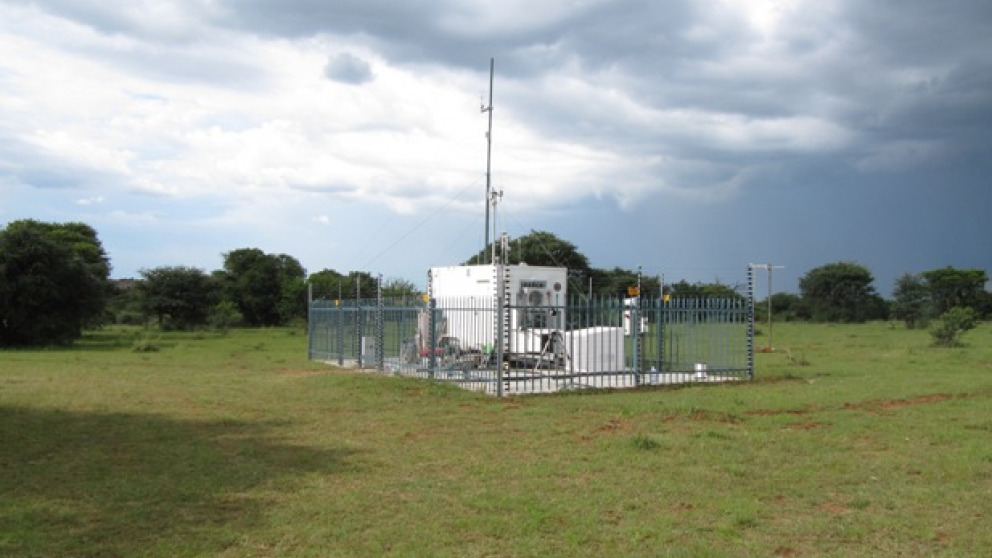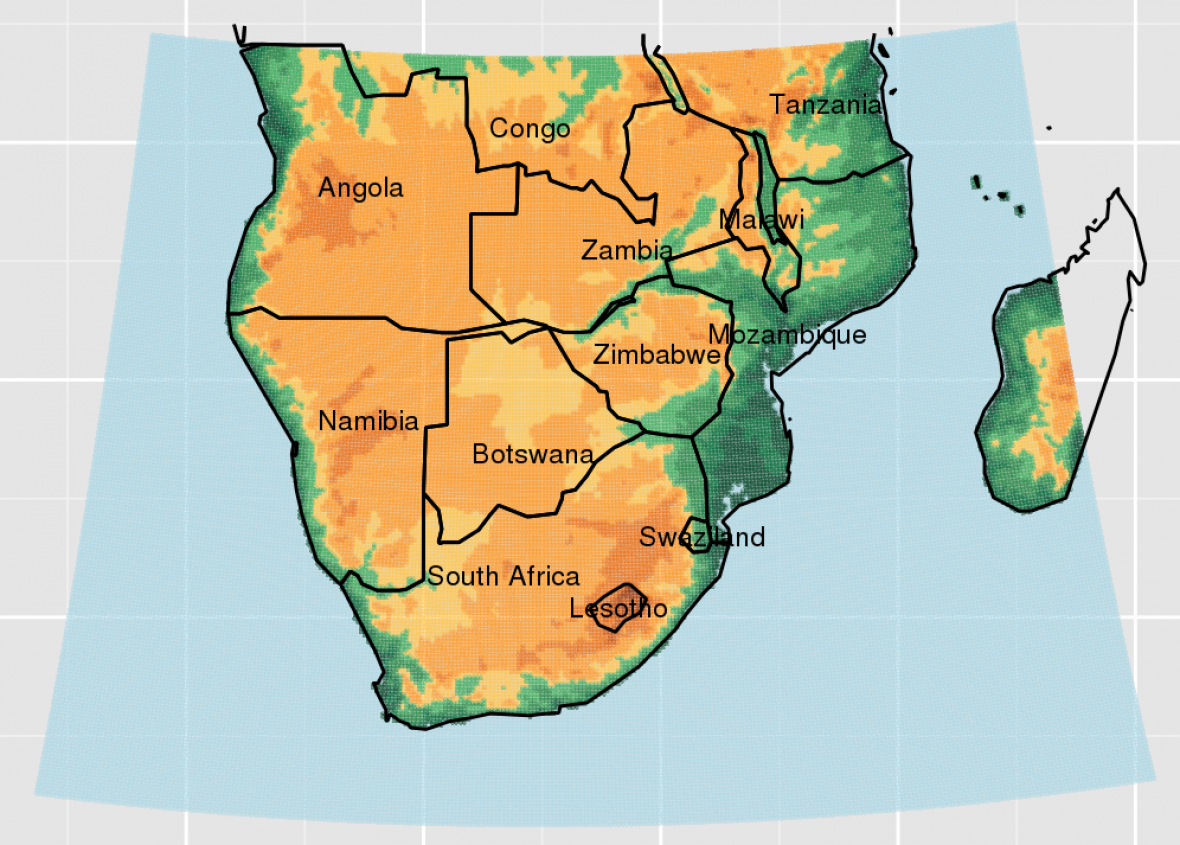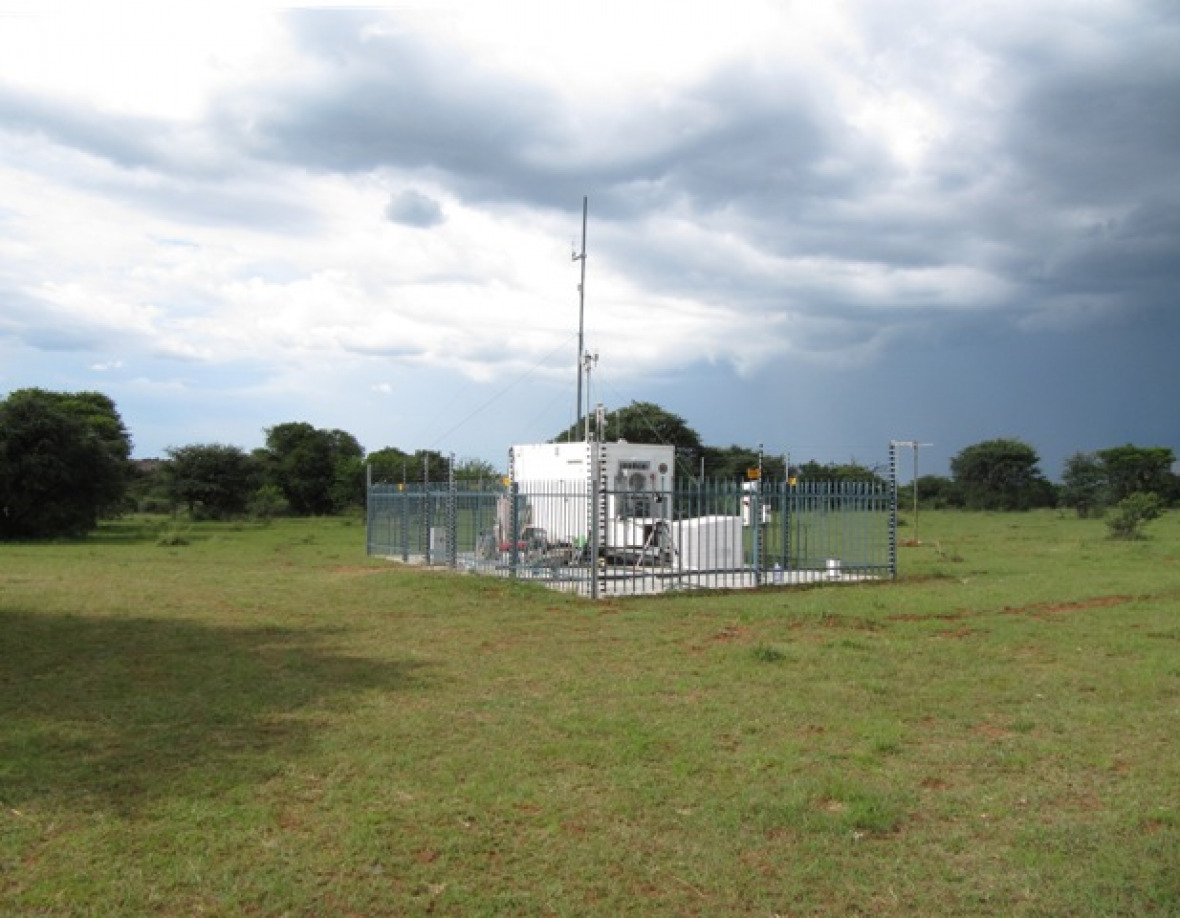Headline:
Air Quality in Southern Africa: New Study Investigates Impact of Black Carbon Emissions

Black carbon is an air pollutant that is harmful to human health and also contributes to global warming. It is emitted in combustion processes, for example in industry, power plants and diesel engines, through the burning of wood and waste, and in wildfires in forest and grassland areas. In southern Africa, the Johannesburg/Pretoria Metropolitan Area is particularly affected by air pollution. The main pollution sources there are coal-fired power plants, open fires and savanna fires. In recent years various activities have been initiated with the aim of improving research on air quality. One example is a model study carried out at the IASS that focussed on anthropogenic (human-made) black carbon emissions – the first of its kind in southern Africa. The study presents and evaluates a set-up for modelling air quality in South Africa and analyses the extent to which anthropogenic emissions contribute to black carbon concentrations. It was recently published in the journal Atmospheric Chemistry and Physics.

There is already data on the quantities of black carbon and other pollutants emitted in South Africa. However, what happens to these emissions in the air is decisive for the air quality in a particular place. “The quantity of black carbon in the atmosphere at a specific location depends on many different factors: not only the quantity of local emissions plays a role here, but also the quantity of pollutants transported to the area from other places. Prevailing weather conditions are also crucial. For example, so-called stable conditions lead to the accumulation of pollutants in one place. Under such conditions there is hardly any exchange of polluted air with cleaner air, for example from higher layers of the atmosphere or clean, rural areas,” explains Friderike Kuik, a PhD student at the IASS and the main author of the study. Among other things, her study shows that up to 100 per cent of the black carbon in the air in Southern African cities is produced by human activities. Furthermore, in areas affected by large savanna fires, black carbon warms the atmosphere during those fires.
The model study uses the Weather Research and Forecasting Model (WRF-Chem), an open-access tool. The model findings were cross-checked against measurement data, including data from the Welgegund Measuring Station, which was set up in a rural area 100 kilometres west of Johannesburg by North-West University South Africa, the University of Helsinki and the Finnish Meteorological Institute. Thanks to the expansion of the South African Weather Service’s network for measuring air quality, the data situation on air pollution has improved in recent years.

For their study, the scientists investigated a period of four months in 2010, for which the Welgegund Measuring Station had data on black carbon. Based on the available emissions data, they first simulated the actual air quality development. Then in a second simulation they set all anthropogenic black carbon emissions to zero and observed what effect that had on air quality. The study’s finding that the bulk of black carbon in the Johannesburg/Pretoria Metropolitan Area comes from anthropogenic sources is a step in the direction of targeted measures.
Most of the work on this study was undertaken as part of Friderike Kuik’s Master’s thesis, which she submitted in the autumn of 2014. The study was carried out in cooperation with the former IASS researcher Axel Lauer (now at the Institute of Atmospheric Physics at the German Aerospace Center), Paul Beukes, Pieter Van Zyl and Micky Josipovic from North-West University South Africa, Ville Vakkari and Lauri Laakso from the Finnish Meteorological Institute, and Gregor Feig from the South African Weather Service.
Article:
16.11.2015
